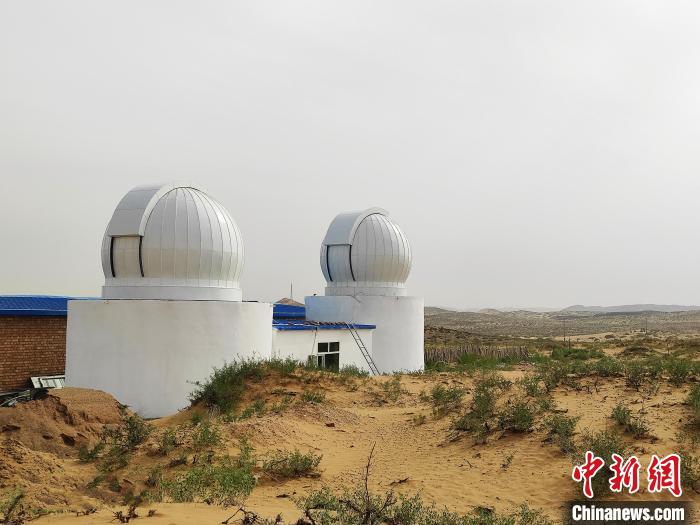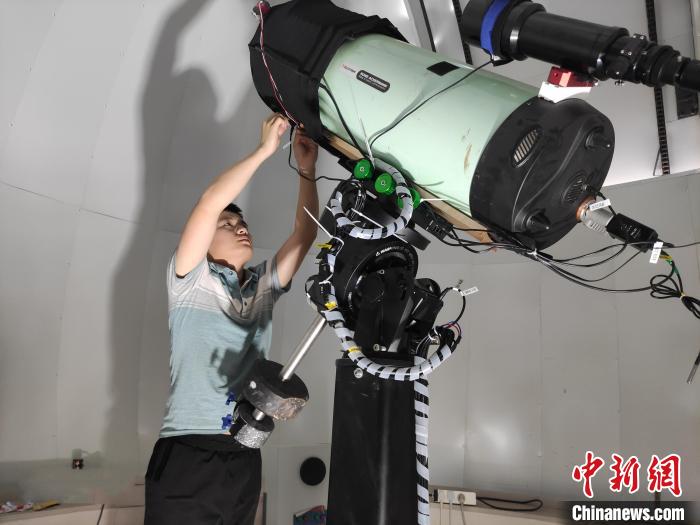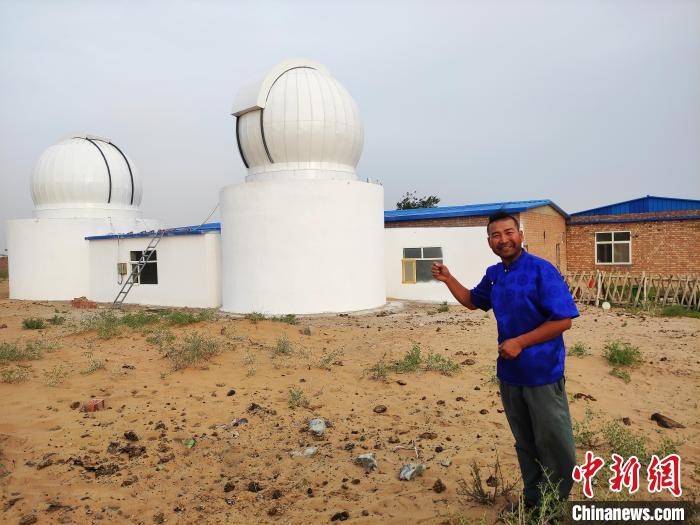Inner Mongolian herder sets sights on exploring Milky Way after building astronomical observatories in desert hinterland of north China
Two homely observatories located in the hinterland of the Tengger Desert in north China’s Inner Mongolia Autonomous Region have provided a place for local herders and their children, as well as tourists, to enjoy a clear view of the stars hanging over the vast desert expanse.

Photo shows two observatories built near Beyi’er’s home in the hinterland of the Tengger Desert in north China’s Inner Mongolia Autonomous Region. (Chinanews.com/Zeng Lingfei)
The observatories were built by Bayi’er, a local herder in Alxa League, Inner Mongolia, and the Hunan Astronomical Society, which is based in central China’s Hunan Province.
Speaking of the reason why he would like to build the observatories, Bayi’er expressed: “I found that the children here were attracted by the magnificent view of the starry sky. Then, I thought about building observatories and inviting experts to the area to help popularize astronomical and scientific knowledge among the children.”
Bayi’er was introduced to Tan Wei, director of the Hunan Astronomical Society, who he later got in touch with to introduce his plan to build observatories. After conducting several field trips to the village where Bayi’er lived, Tan found that the locality would provide favorable conditions for building observatories.

A child looks at the starry sky through an astronomical telescope in the hinterland of the Tengger Desert in north China’s Inner Mongolia Autonomous Region. (Chinanews.com/Zeng Lingfei)
In April 2022, two observatories were built near Bayi’er’s home at a total investment of 1 million yuan ($148,400), with half of the money provided by Bayi’er and the other half coming from the Hunan Astronomical Society.
The observatories are the first ones built by the Hunan Astronomical Society outside Hunan Province, said Zhou Jia, an engineer with the Hunan Astronomical Society.
The hinterland of the Tengger Desert is sparsely populated and far away from any cities, as well as having little light pollution, many sunny days and dry weather. “The area has an ideal night sky environment, creating favorable conditions for photography and observing the stars,” said Zhou.

A technician debugs an astronomical telescope in the hinterland of the Tengger Desert in north China’s Inner Mongolia Autonomous Region. (Chinanews.com/Zeng Lingfei)
After completing the construction project, experts from the Hunan Astronomical Society have been invited to the observatories to give lectures to local children. Zhou introduced that the observatories have two functions—namely, astronomical research and observation and the popularization of astronomical and scientific knowledge.
Just over one month after unveiling the new observatories, the area had already received more than 300 visitors.

Beyi’er provides a tour of the two observatories built near his home in the hinterland of the Tengger Desert in north China’s Inner Mongolia Autonomous Region. (Chinanews.com/Zeng Lingfei)

A lecturer presents information aimed at popularizing astronomical and scientific knowledge among the general public in the hinterland of the Tengger Desert in north China’s Inner Mongolia Autonomous Region. (Chinanews.com/Zeng Lingfei)
Photos
Related Stories
- Amateur observatory makes its way to the big league
- Researchers working in frigid weather at China’s northernmost observatory
- China's oldest observatory opens free to public
- China to build Antarctic astronomical observatory
- China to build high altitude observatory to monitor cosmic rays
- Chile unveils world's largest astronomical observatory
- Magnitude-6.0 quake hits off Indonesia: Hong Kong Observatory
- Greeting solstice at 3,800-year-old observatory
- China to build automatic observatory in South Pole
Copyright © 2022 People's Daily Online. All Rights Reserved.









